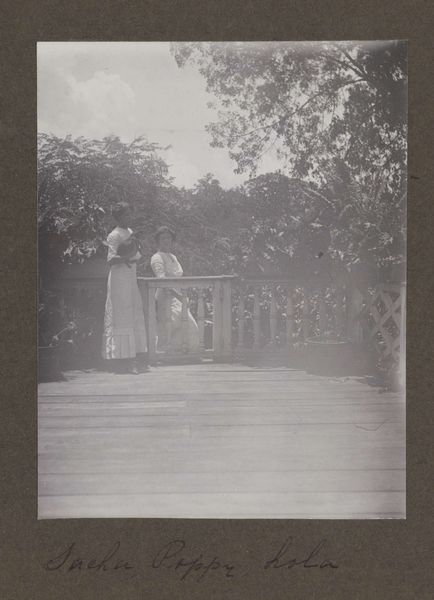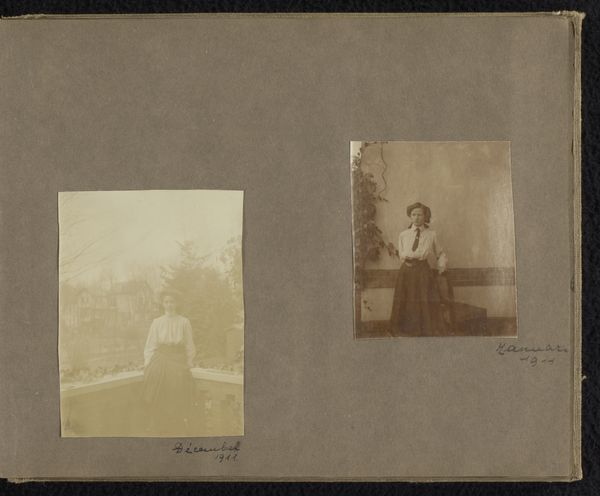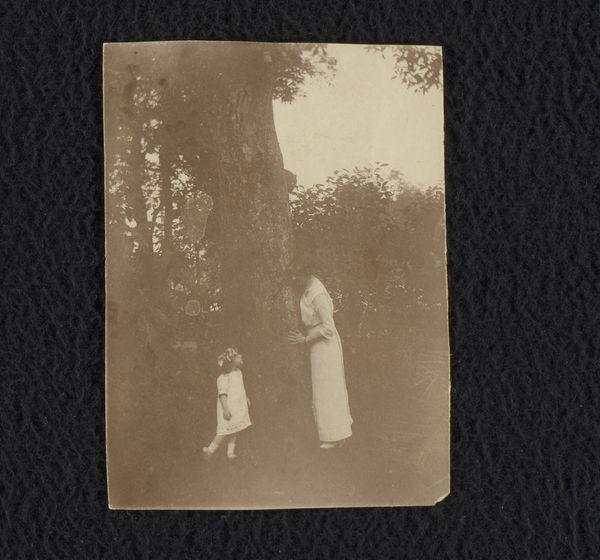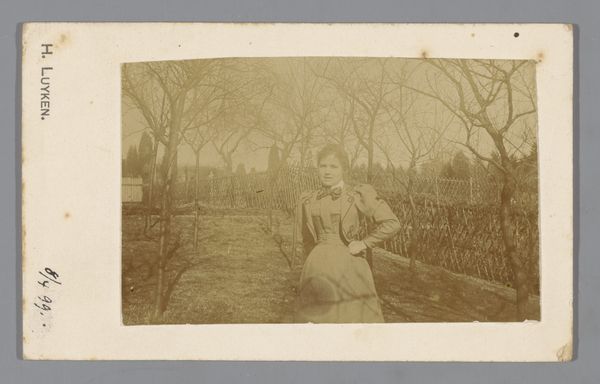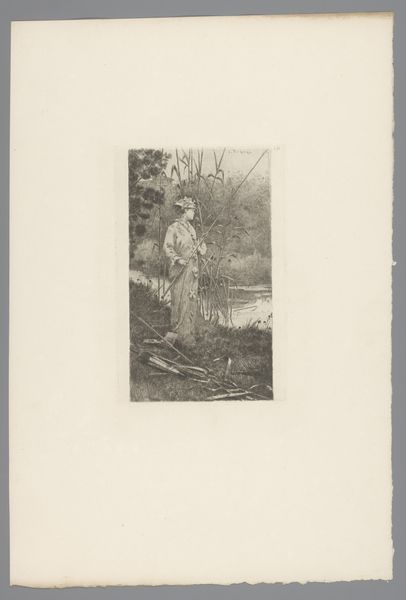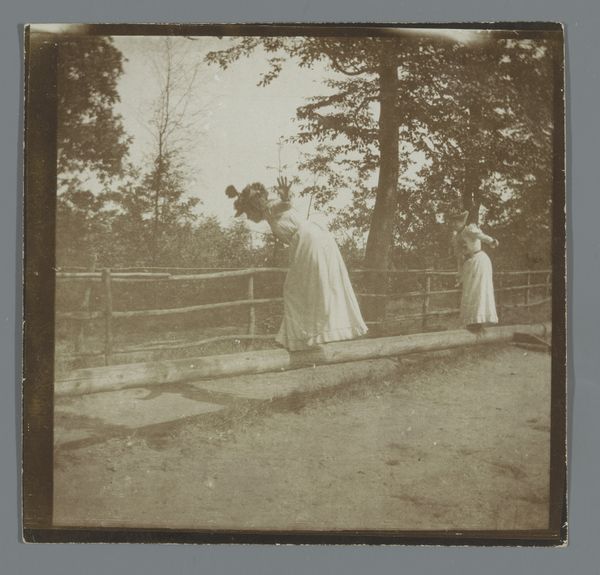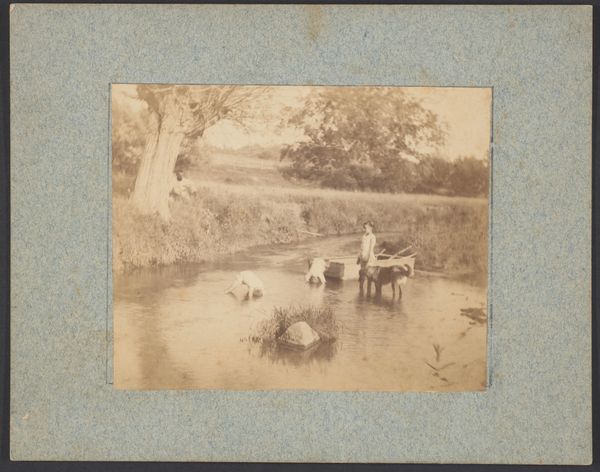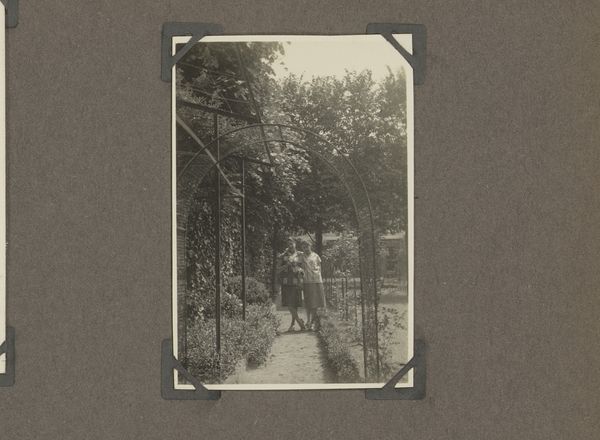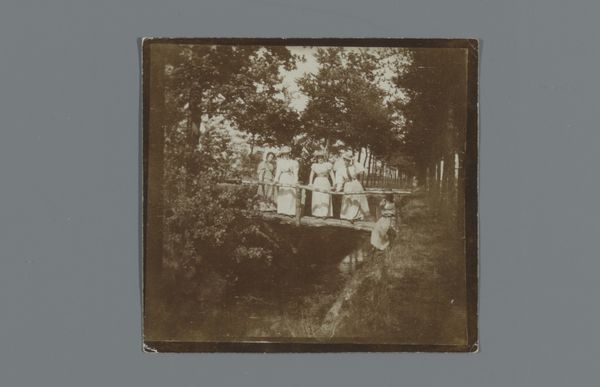
Dimensions: height 230 mm, width 169 mm, height 327 mm, width 250 mm
Copyright: Rijks Museum: Open Domain
Curator: This gelatin-silver print, captured sometime between 1900 and 1925, is titled "Portret van vrouw met jongen, lopend over een plank over een sloot" or translated, "Portrait of a woman with a boy, walking across a plank over a ditch." The photograph is attributed to G.V. Scagen. Editor: It feels quite staged, almost theatrical. The way they pause on that precarious little bridge, it’s like they're enacting a scene. I feel a sense of deliberate placement more than spontaneity. Curator: Exactly! And in terms of imagery, we can see a mother guiding a child across a threshold. Think of bridges and water throughout mythology: These images are fraught with symbolic potential regarding life changes and rites of passage. The whole image carries the air of a carefully constructed memory. Editor: Yes, and the muted tones add to this air of nostalgia and distant past. This makes the photo read as an "everywoman" of the period. Also, I can not help to analyze this kind of pictorial scene under a capitalist historical scope, as the genre painting gained more popular exposure during this time thanks to the new printing media such as photograph. Curator: Pictorialism played with blurring the lines between photography and painting, didn’t it? A noble goal if one wishes to create images suffused with symbolism. And I am particularly attracted by this woman, which shows what Jung might call a representation of "The Mother," embodying nurturance, protection, and unconditional love, but placed under a common and daily situation. Editor: Right. It's a snapshot of a societal ideal presented with all the contemporary art media available at the time: family, innocence, and the safe passage through life's uncertain paths. And Scagen places them just perfectly there to pose, making a sharp contrast to our Instagram generation, constantly showcasing random and unrequested bits of our lives. Curator: In a way, the image captures the aspiration of that time, perhaps an effort of construct what was considered a family, making this simple moment feel both archetypal and deeply personal. Editor: Looking back, it gives us pause to reflect how societal expectations of representation have drastically morphed since Scagen released this artwork for the public. A true blast from the past.
Comments
No comments
Be the first to comment and join the conversation on the ultimate creative platform.
